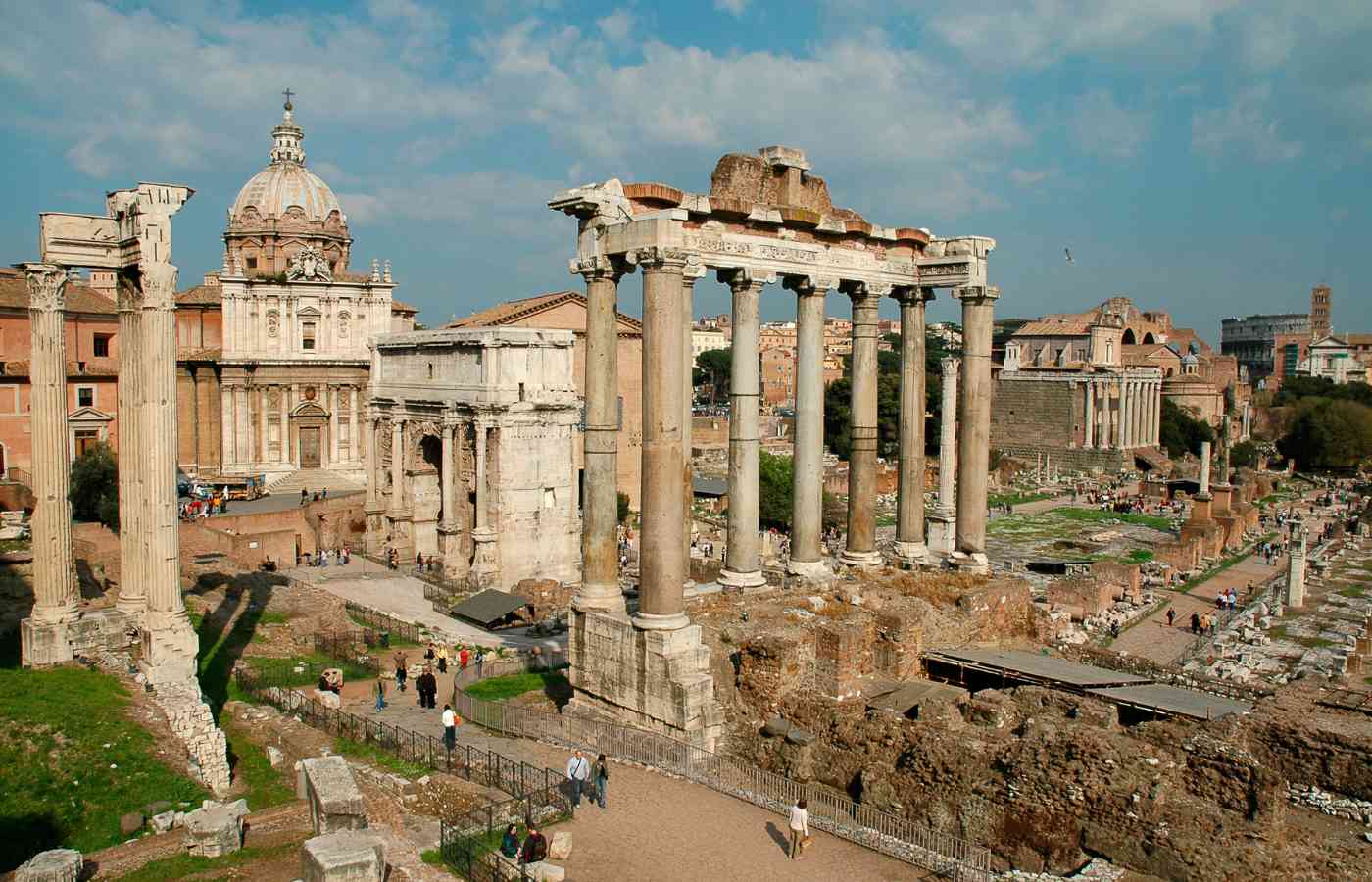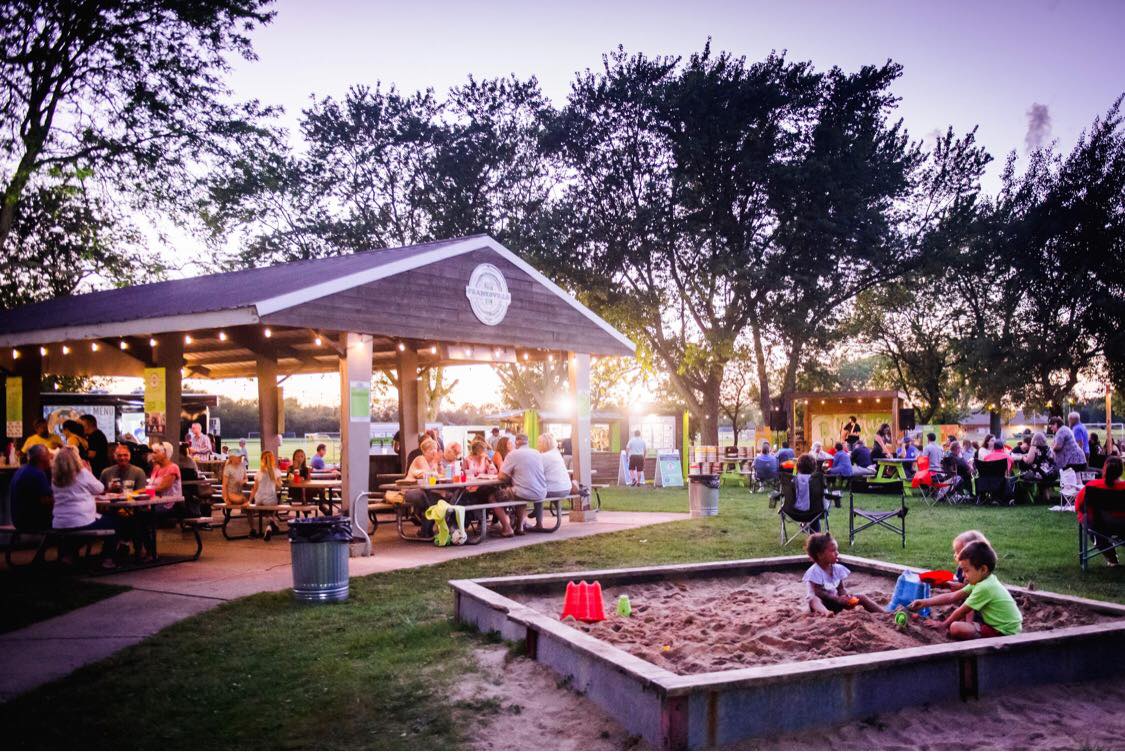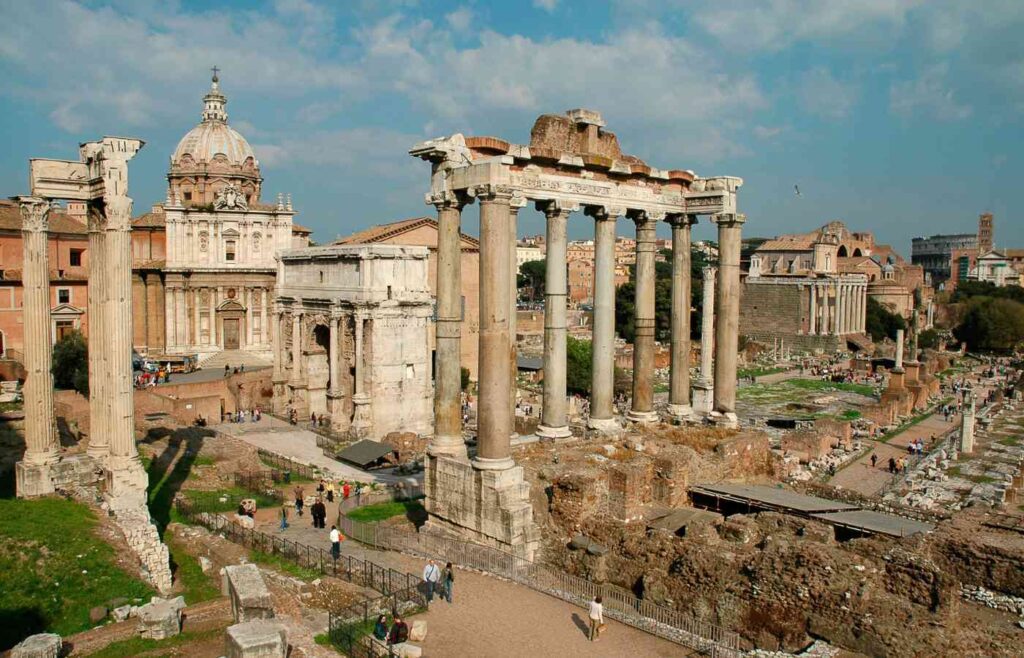
Is your child interested in Rome and ancient Roman history? You’re in the right place to learn more!
April 21st is considered the founding day of Rome, so there’s no better day to learn more about this fascinating ancient city.
Rome is one of the world’s oldest cities, and the ancient ruins that still stand today easily capture our imagination.
From the balding Julius Caesar, to awe-inspiring aqueducts and incredible superstitions, the ancient Romans are full of surprises.
We’ve gathered together a list of 100 fun facts about one of the most influential empires in world history, and one of the most important cities in Europe.
1. Rome was the first city in the world to record a population of 1 million people.
According to the census, this included people throughout modern day Europe, Asia, and northern Africa.
2. The Roman Empire lasted for about 1,000 years.
It existed from its founding in 625 BC to its fall in AD 476. That’s a long time!
3. Its nickname is the Eternal City.
Because of the strength of the Roman armies and the empire, many people began to refer to Rome as the Eternal City. This is still its nickname today.
4. There were about 70 Roman Emperors through the history of the Roman Empire.
Most of them ruled for about 15-20 years. After all, the life expectancy back then was only about 35 years old.
5. Roman Emperors were autocrats.
This means they were in charge of the entire Roman government and had absolute power.
6. Purple clothing was a status symbol.
Purple clothing was reserved only for emperors or senators. To make purple, a dye was created from murex seashells. It was actually considered treason for anyone other than the emperor to dress completely in purple.

7. Julius Caesar named himself dictator for life.
When Julius Caesar took power he named himself dictator for life. However, this didn’t last long. He was assassinated a year later by a group of senators on the ides of March (March 15th).
8. Julius Caesar was bald.
And he was embarrassed about it! Julius Caeser hated going bald so he made it illegal for anyone to stand above him and look down. If you looked down at his bald patch you could be put to death.
9. The month of August is named after the first Roman Emperor, Caesar Augustus.
Not only that, but Augustus also nearly doubled the size of the Empire.
10. The Emperor Constantine made Christianity the main religion of Rome.
Constantine also founded Constantinople, which became the most powerful city in the world. He ruled from A.D. 280 – 337.
11. The last Emperor of Rome was Romulus Augustulus.
He served for only ten months. He was ousted by a German barbarian and sent to live with relatives in Southern Italy. His fate beyond that is unknown.
12. Romans drank pig dung as an energy drink.
Emperor Nero in particular was a big fan of this drink. The Romans observed how manure seemed to help farmlands become fertile, so they thought it would have a regenerative effect on the human body, as well. Kind of makes sense, actually!
13. The Emperor Commodus renamed the capital city of “Rome” after himself.
Emperor Commodus had delusions of grandeur, and imagined he was the god Hercules. His advisors actually had him strangled by a champion wrestler.

14. There were half a million soldiers in the Roman Army.
It is considered one of the fiercest militaries in history.
15. Roman soldiers had to march up to 30 miles per day.
That’s more than 60,000 steps!
16. Discipline in the Roman army was extremely strict.
A general had the right to immediately sentence any soldier to death for even the slightest offense.
17. The backbone of the Roman Army was the much-feared Roman legion.
A Roman legion was comprised of 5200 foot soldiers and an additional 300 soldiers on horseback.
18. At its height, Roman rule spanned over 2 million square miles.
Roman rule expanded throughout Europe, north Africa and Asia.
19. Despite its strength, the Romans were unable to conquer Scotland.
The cold weather and fierce resistance of the Scots prevented them from taking control there.
20. Today, Rome is the capital city of Italy.
It’s located on the continent of Europe.
21. In 2023, Rome is the third largest city in the European Union.
There are over 2.7 million people living there.
22. The Tiber River that flows through Rome is over 250 miles long.
In ancient times, it was a reliable source of fresh water.

23. Rome is located along the Mediterranean Sea.
The Mediterranean Sea was formed by an ancient flood over 5 million years ago when water from the Atlantic Ocean breached the mountain range joining Europe and Africa.
24. Massive Roman aqueducts enabled millions of gallons of water to be carried throughout the city every day.
You can still find some of these aqueducts standing throughout Europe today.
25. The Romans built over 200 aqueducts throughout their empire.
There were 11 in the city of Rome alone.
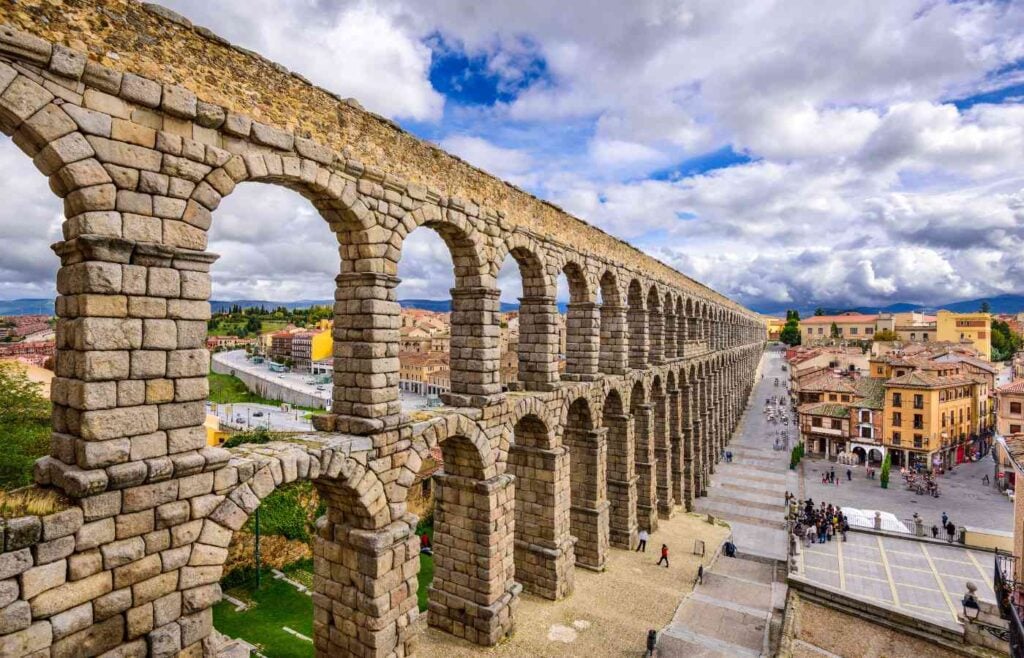
26. The Roman Empire contained 230 amphitheatres.
They were large, circular or oval open-air venues with raised seating, use for gladiator combats, executions and animal slayings.
27. The largest amphitheater ever built during the Roman Empire was the Colosseum.
It’s still considered the largest amphitheater on Earth.
28. The Colosseum is an oval shape and stands about 12 stories high.
It measures 189 meters long, 156 meters wide, and 50 meters high.
29. The Colosseum could seat 60,000 spectators at its events.
That’s much more than the Fiserv Forum where the world champion Milwaukee Bucks play! The capacity there is 20,000.
30. The Colosseum was built by tens of thousands of slaves.
It tooks these slaves over 8 years to build the massive structure.
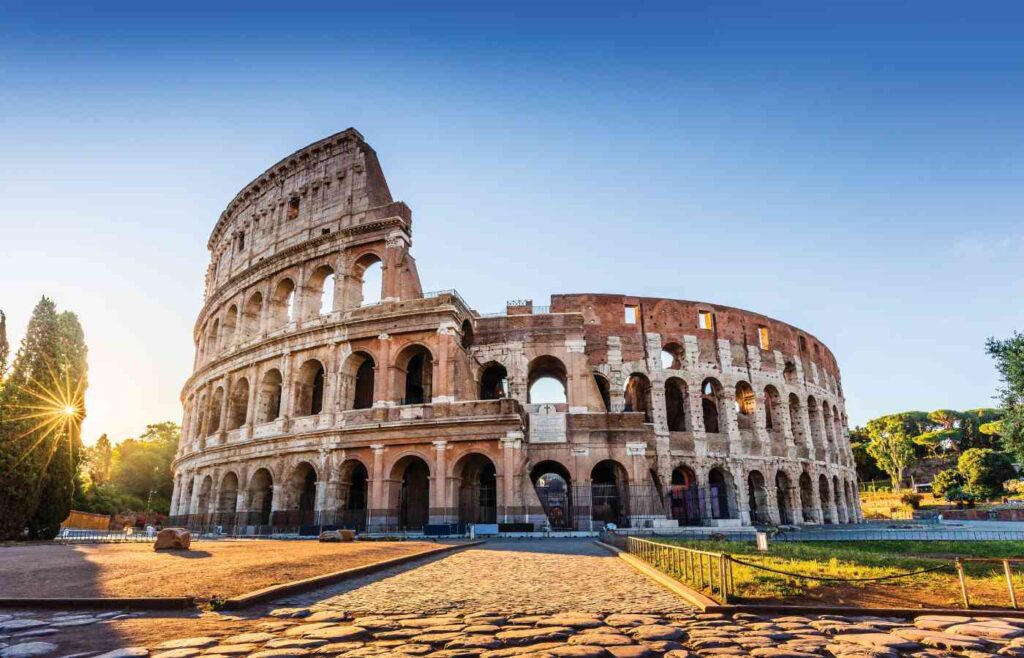
31. The modern name for the Colosseum is the Flavian Amphitheater.
This name is used by historians, but the name is rarely used in everyday speech.
32. Colosseum events were extremely brutal.
It was a place for gladiator combats, wild animal hunts, animal slaughters, naval battles, and executions.
33. Gladiators and chariot racers had fans just like modern athletes.
Gladiator fights were one of the most popular forms of entertainment for the ancient Romans. People were put in a ring to fight to the death.
34. Roman charioteers earned more money than the best-paid athletes of today.
Experts estimate that, when adjusted for inflation, some charioteers’ fortunes were as much as 15 times greater than those of today’s wealthiest athletes.
35. Gladiator blood was recommended by Roman physicians to aid various ailments.
It was thought to be particularly effective in treating epilepsy and infertility.

36. Sometimes the Romans would flood the whole Colosseum or Circus Maximus for a boat battle.
At these special events, gig boats with warriors fought in the water with live props like live alligators.
37. The Colosseum’s major events were often free for everyone to attend.
This was a way for Emperors to gain popularity and support from the public.
38. The Colloseum originally had a velarium (an awning, or sun shade).
This helped to protect the people of Rome from the sun.
39. Romans brought in exotic animals for the people of Rome to see.
The animals killed in the Colloseum were considered to be extremely exotic at the time. They included rabbits, crocodiles, elephants, leopards, bears, tigers, hippopotamuses, wild goats, boars, dogs, lions and deer.
40. Throughout its history, over 500,000 people and one million animals died in events at the Colosseum.
Up to 10,000 animals could be killed in a single day.
41. The Colloseum had trap doors!
There were 80 entrances, 36 trap doors, and several undergrounds passages below the Colosseum where the wild animals and Roman gladiators waited.
42. Today the Colosseum attracts 6 million visitors per year.
It’s still considered the largest amphitheater in the world (even thought only one third of it remains).
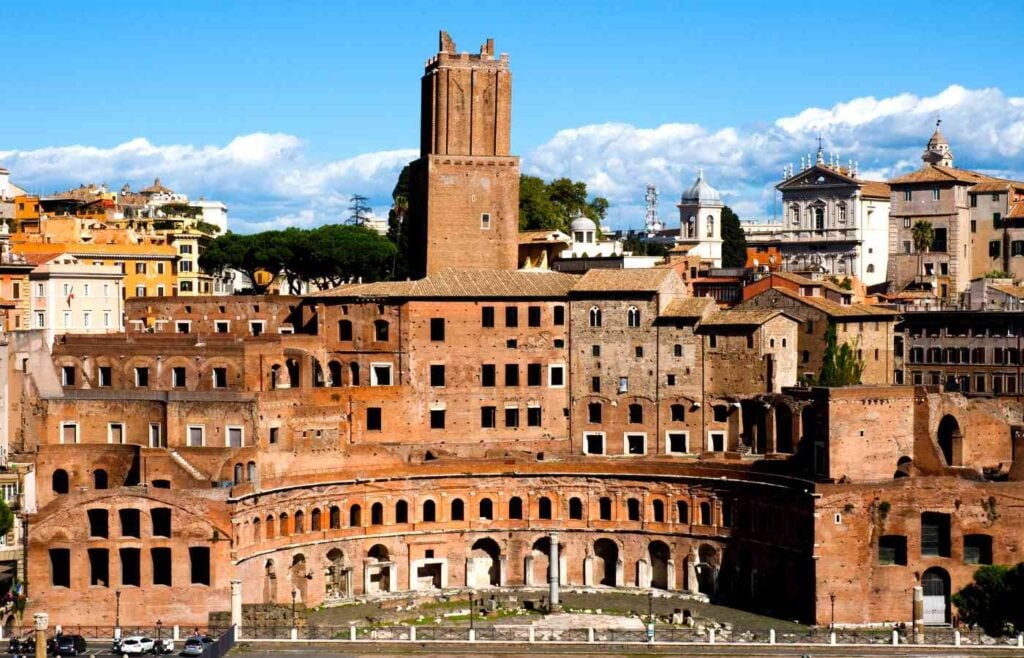
43. The Romans built the first shopping mall.
The first mall was constructed in Rome in 100 AD. Trajan’s Market was a concrete and brick building that was home to 150 shops on six levels, with a Great Hall for large events and performances.
44. Rome had one of the earliest forms of welfare.
The government offered free grain to its citizens, called a “grain dole”.
45. The first paved highway in Europe was built by the Romans.
It was called the Appian Way, and it was constructed in 312 B.C.E.
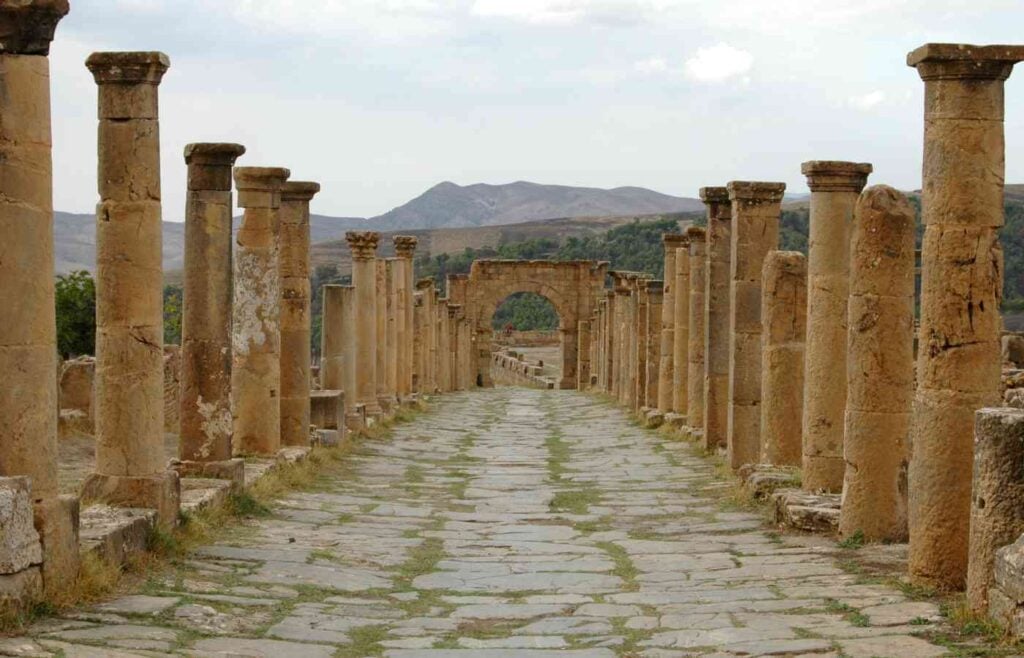
46. At its peak, the Roman Empire boasts 29 highways and 372 roads that connected 113 provinces.
As the saying goes, “All roads lead to Rome”.
47. Roman roads covered more than 250,000 miles.
Many of them were stone paved, which was an impressive feat at the time.
48. Romans spent lots of money on fancy, elaborate tombs.
This was so that their memories would live on after they died.
49. Rome had over 140 public toilets.
People would socialize together while they went to the bathroom.
50. Instead of toilet paper, the Romans used a wet sponge on the end of a stick.
The sponge would be soaked in vinegar or salt water. These tools were often shared among many people. Yuck!
51. The Romans sometimes used powdered mouse brains as toothpaste.
Many ingredients could be used to create a paste that they would rub on their teeth, and mouse brains was one possible ingredient.
52. They also used urine as a mouthwash to whiten their teeth.
Importing bottled urine became so popular that the emperor Nero taxed the trade. The ammonia in urine was thought to disinfect mouths and whiten teeth, and urine remained a popular mouthwash ingredient until the 18th century.
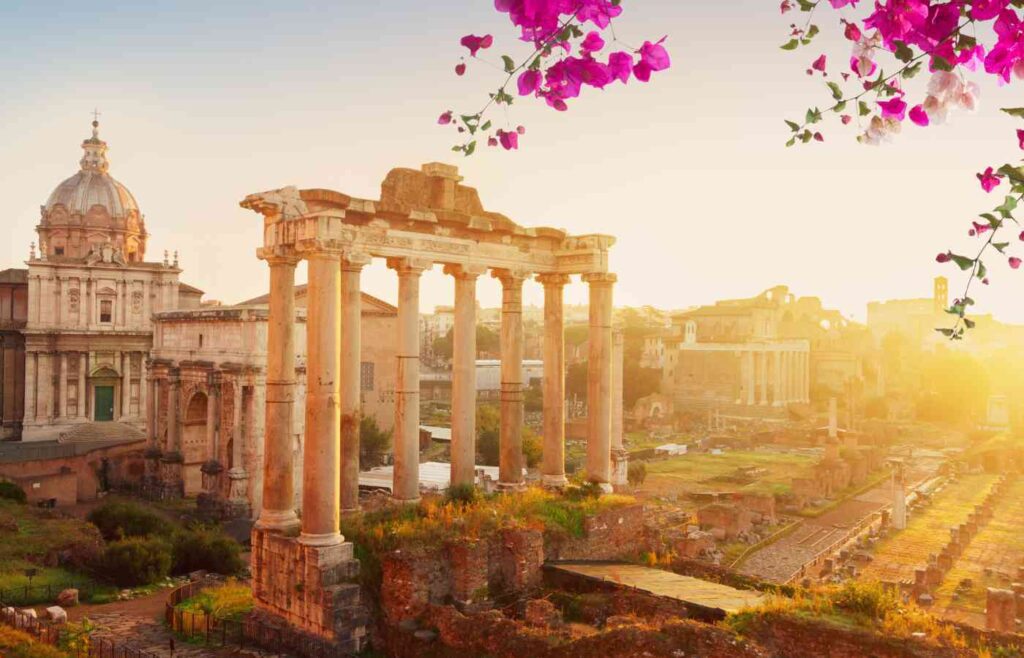
53. The Roman religion, also called Roman Mythology, involved the worship of many gods and goddesses, each with their own unique specialty.
Well known Roman gods include Zeus, Poseidon, and Apollo.
54. Many ancient ruins are underground.
If you go to Rome today, you’ll notice that many of the ruins are underground because after hundreds of years, the city has piled on top of Ancient Rome.
55. Romans from wealthy families used to eat flamingo tongues as delicacies.
They would also eat mice that had been fattened up over time in large pots.
56. Rich Romans had servants to do anything they wanted for them.
Slavery was a major part of Roman society.
57. There were people in Rome who earned their living by plucking other people’s armpits.
Both men and women plucked their armpit hair to help with the stench of their body odor.

58. Roman children did not talk back to their parents.
If Roman children talked back to their elders, they could be kicked out of the house or sold into slavery. Yikes!
59. Wealthy Roman men often ate lying down on their bellies to help with digestion.
One hand would hold up their head and the other hand would feed food that had already been cut by slaves.
60. Roman society was based around men.
Men ruled absolutely in Roman society. Women were defined by the social status of their fathers and husbands.
61. Togas were a sign of Roman citizenship.
Only free-born Roman men were allowed to wear them.
62. Women fought for their rights in ancient Rome.
One of the ways rich Roman women fought for equality was by fighting for their right to eat lying down like the men.
63. Hair dying was popular among women.
Red and blonde being the most popular colors. Dye colors were made from goat fat, beech wood ashes, henna, saffron, and bleach.
64. The Romans loved to party.
Banquets were a status symbol, and feasting was considered a way to keep death at bay.
65. Romans would make themselves vomit so that they could eat and drink more.
To keep the parties and banquets going, guests would vomit between courses to let them continue eating and drinking deep into the night.
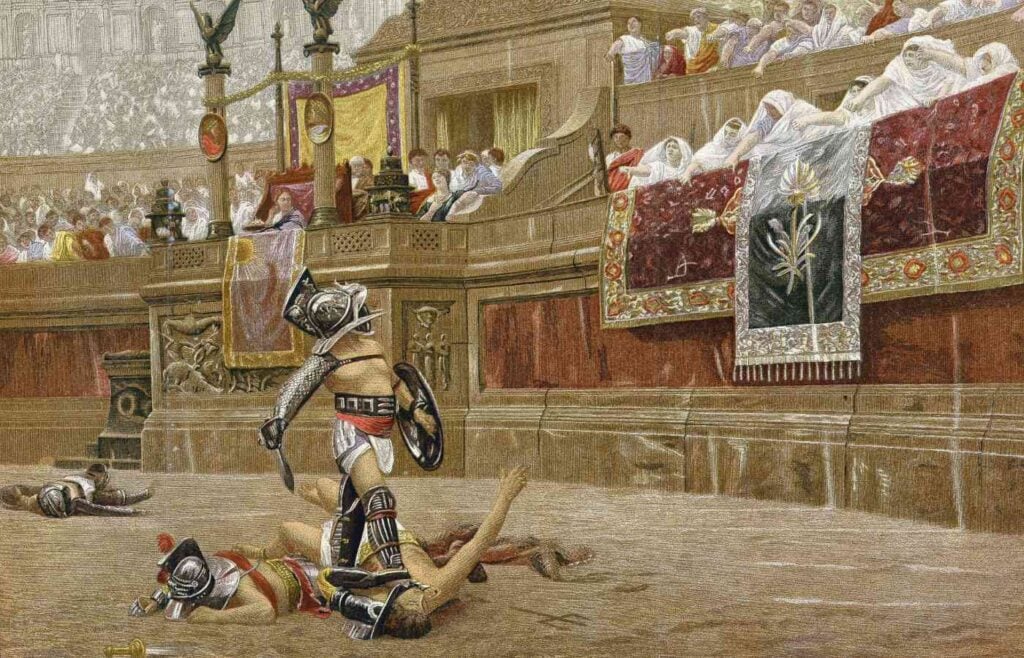
66. They used a feather to induce their vomiting.
And, not surprisingly, slaves would have to clean up their mess.
67. At one banquet in Rome, the guests were served with hundreds of ostrich brains!
Yum?
68. Anything that fell from the table was believed to belong to the afterworld.
You were not supposed to pick it up for fear that the dead would try to punish you for it.
69. Romans were very superstitious.
Spilling salt was considered bad luck in ancient Rome.
70. Left-handed people were also considered unlucky.
71. Ancient Rome used to be covered in graffiti that was scratched into stone.
You can still see some of this graffiti today as you walk throughout the city.
72. Romans used to wash clothes in urine.
Because urine contains ammonia, a powerful bleaching agent, ancient Romans used to wash their clothes in it. There were public urinals that men could use at street corners, and laundries would collect the contents of the urinals to use for washing.
73. The fall of Western Rome is considered the start of the “Dark Ages” in Europe.
74. The native language of the Romans was Latin, but they often spoke Greek as well.

75. The Roman people took baths together.
Romans would go to communal public baths where everyone would get in together.
76. Roman baths contained natural spring water which still flows in the River Avon.
Most Romans living in the city went to the bath house every day to cleanse and purify themselves, as well as socialize, have meals, and discuss business and politics.
77. Romans didn’t use soap.
Instead they cleaned themselves by rubbing the body with oil and an abrasive, like fine sand or ground pumice. They then used a strigil, usually made of bronze, to scrape off the oil and dirt.
78. If you were in a wealthy family, you may have had central heating!
Known as a hypocaust, this heating system used a furnace to force heat into hollow chambers between the ground and the floor, and up pipes in the wall, heating the rooms. It is considered the world’s first central heating.
79. The ancient Romans invented the first newspaper.
It was called the Acta Diurna, and it was first published in 59 BCE. The newspaper published chronicles of events, assemblies, births, deaths, and daily gossip.
80. The Romans invented what we now think of as books.
For most of human history, literature was written on clay tablets and scrolls. The Romans creating the codex, a stack of bound pages that we now recognize as a book.
81. Ancient Romans were the first to concrete in a widespread manner.
To create it, they used a mixture of volcanic ash, lime, and seawater.
82. Our calendar is largely based on the first Roman calendar.
This early calendar had 10 months and 304 days, and the year began in March. It is said to have been drawn up by Romulus, seven or eight centuries before the Common Era.
83. Today, Rome is home to Vatican City, where the pope lives.
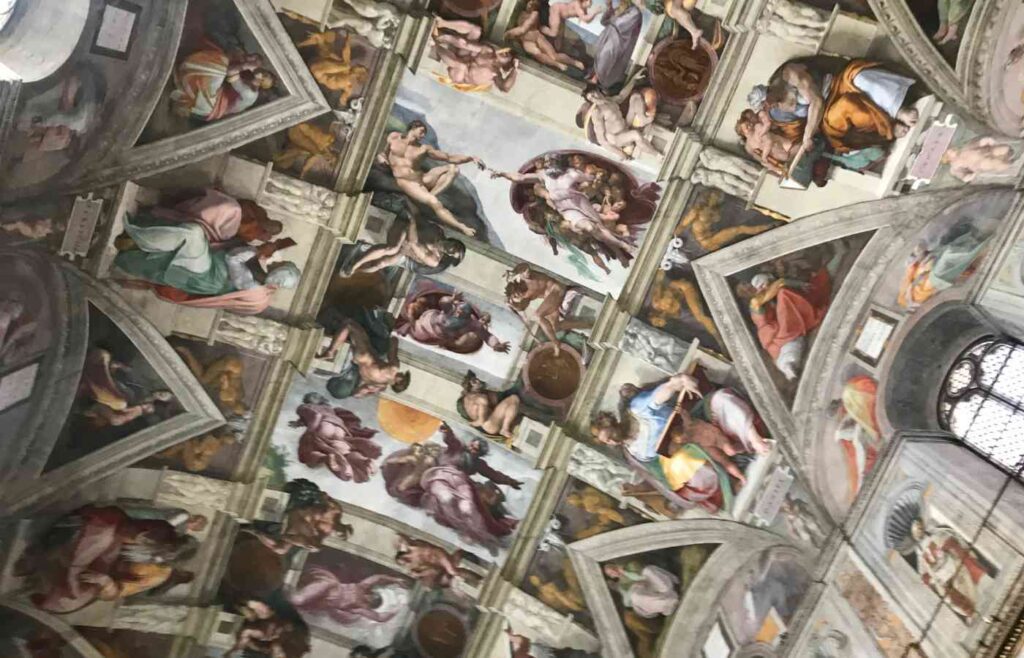
The pope is the religious leader for Catholics.
84. Rome has a large Roman Catholic population.
85. Roughly one in two Christians are Roman Catholics, and one out of every seven people worldwide.
86. Vatican City is located in Rome, but it is actually its own independent country.
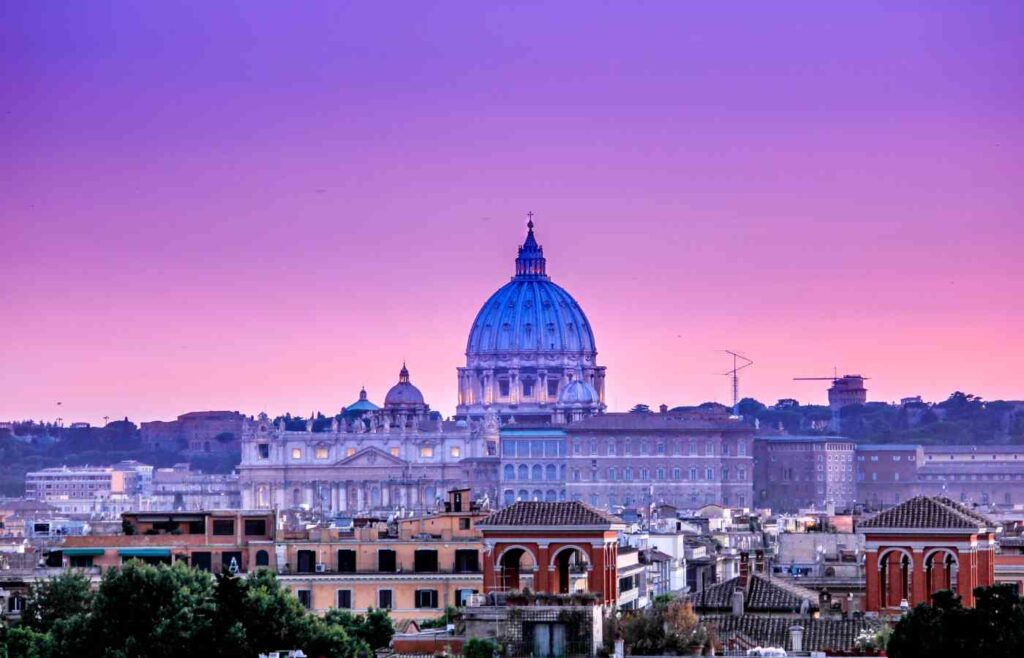
87. Vatican City is the smallest country in the world.
It has an area of only 0.44 square kilometers and a population of 825 people.
88. The Sistine Chapel is one of the Vatican’s most famous features.
The ceiling frescoes took Michelangelo four years to complete and cover 12,000 square feet. It was the first time God was depicted in such a way.
89. It took 150 years to build St. Peter’s Basilica at the Vatican.
90. Romans loved water!
There are over 2,000 water fountains in Rome, more than anywhere else in the world.
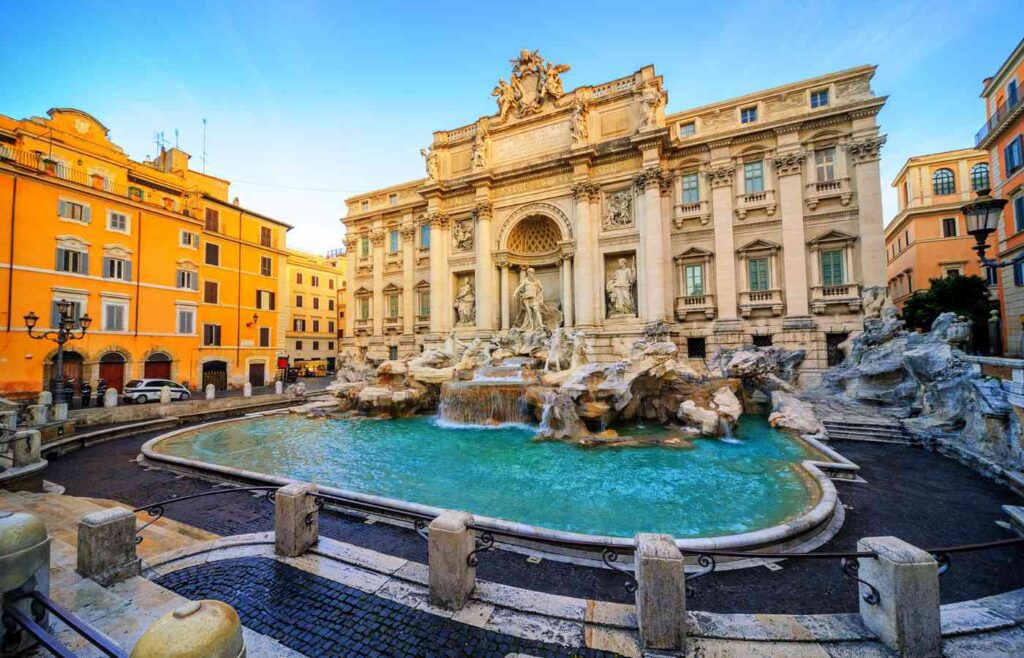
91. The Trevi Fountain (Fontana de Trevi) was built in 1732 from travertine stone, the same material that the Colosseum is made out of.
It was built as a water source for the city.
92. The Trevi Fountain stands 85 feet tall and 65 feet wide.
It spills out almost 3 million cubic feet of recycled water every day.
93. According to legend, if you throw one coin in the waters of the Trevi fountain you’ll return to Rome one day.
Two coins means you’ll fall in love with one of the good-looking Roman locals, and a third coin means you’ll marry them.
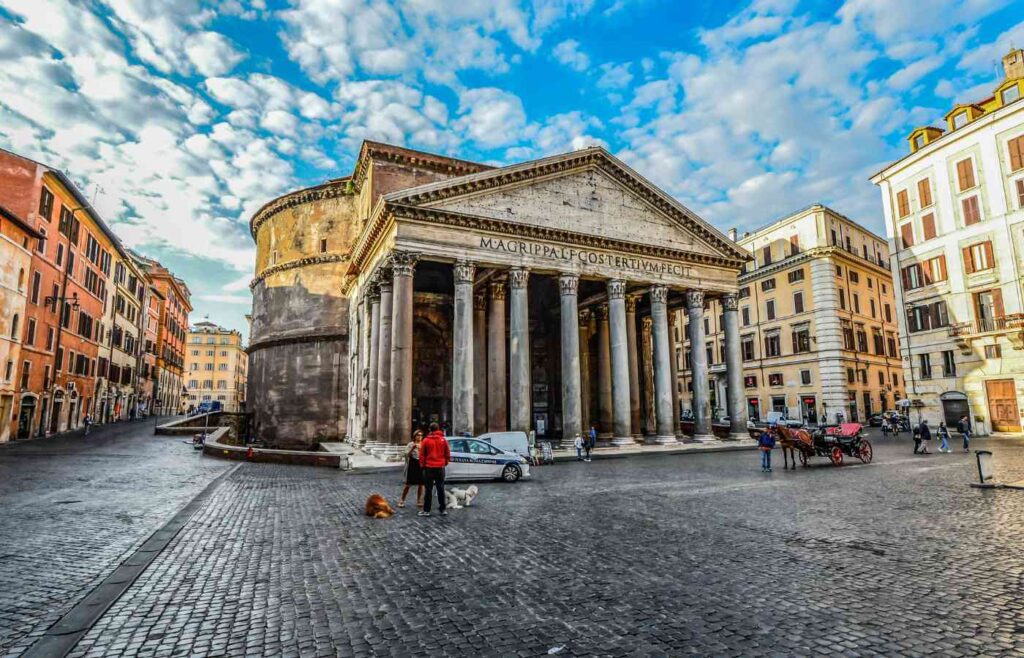
94. The Trevi Fountain collects thousands of dollars a day in coins.
Volunteers collect the coins to help feed the hungry in Rome.
95. The Pantheon is a giant sundial.
It’s a pagan temple that was converted into a Christian church and it has largest unsupported dome in the world.
96. April 21st is considered the founding day of Rome.
If you visit the Pantheon on April 21st of any year at midday, you’ll see the sun streaming through the doorway into the courtyard.
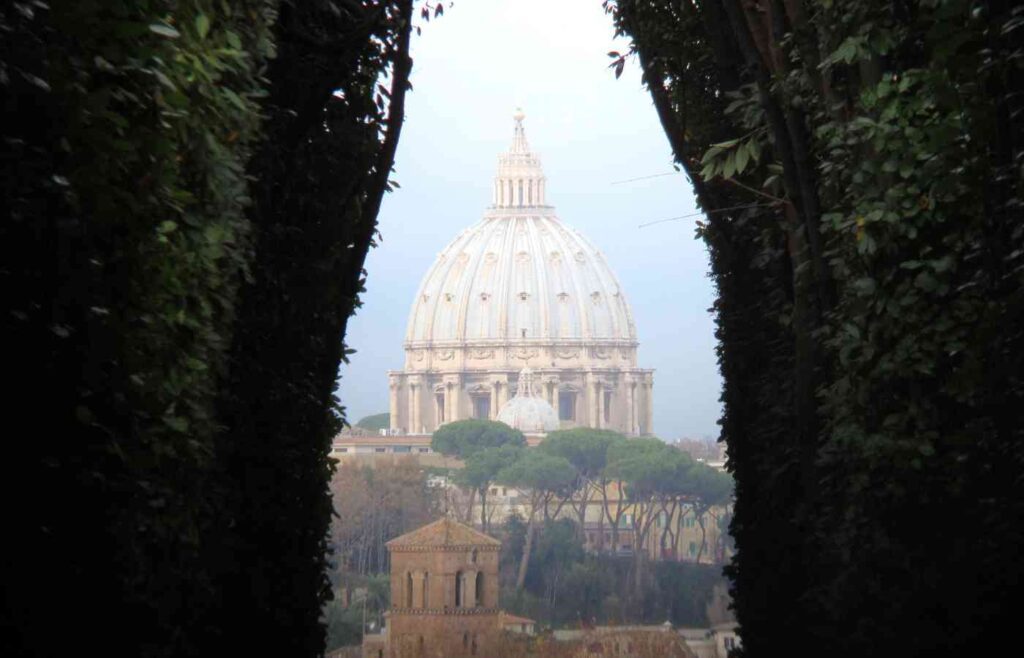
97. The Capitoline Hill offers one of the best views over Rome, and you can visit for free.
It symbolizes the center of the Roman empire and was the location of the most important temples in the city.
98. Palatine Hill is one of the oldest parts of Rome, and it’s home to the ruins of imperial palaces.
It’s a four-sided plateau that rises 131 feet high and overlooks the Colosseum.
99. There’s a secret keyhole at Aventine Hill where you can see a special view of St. Peter’s dome.
100. The Byzantine Empire, or the eastern Roman Empire, survived for a thousand years after the western half had crumbled.
We hope you loved learning about the history of ancient Rome, and the fascinating modern city that awaits you in Italy.
Related Posts:
100 Fun Food Facts to Surprise your Kids
50 Fun Thanksgiving Facts For Kids
25 Fun Facts About Cinco de Mayo for Kids
Sources
We used the following sources to curate this epic list of Rome facts:
https://www.britannica.com/science/calendar/The-early-Roman-calendar
https://www.history.com/news/10-innovations-that-built-ancient-rome
https://www.getty.edu/news/keeping-warm-the-roman-way/
https://www.thecollector.com/top-6-facts-about-roman-aqueducts/
https://www.buzzfeed.com/briangalindo/15-truly-bizarre-facts-about-ancient-rome
https://www.cnn.com/style/article/ancient-roman-feasting-history/index.html
https://www.getty.edu/art/collection/object/103SNR
https://allthatsinteresting.com/ancient-rome-facts#13
https://jaypenner.com/blog/roman-emperors-and-their-rule/
https://uwf.edu/media/university-of-west-florida/colleges/cassh/documents/Rogers_ResearchPoster_SP20-(2).pdf
https://www.britannica.com/biography/Commodus
https://darkrome.com/blog/Rome/7-bloody-colosseum-facts
Calie Herbst, Editor-in-Chief of Milwaukee With Kids, has spent over a decade combining her experiences as a parent of three to create a hub for Milwaukee’s family adventures.
Her decade-long teaching career in Milwaukee Public Schools and academic background, including a Master’s in Teaching from Marquette University and dual B.A.s in Sociology and Spanish from the University of Wisconsin – Madison, fuel her passion for inclusive and engaging family content.
Calie is also a recognized voice in local media, contributing to WISN Channel 12 News, WTMJ Wisconsin Morning News, Fox 6’s Real Milwaukee, and B93.3.
Discover more about Calie’s journey and editorial approach on her About Page and Editorial Policy Page.


